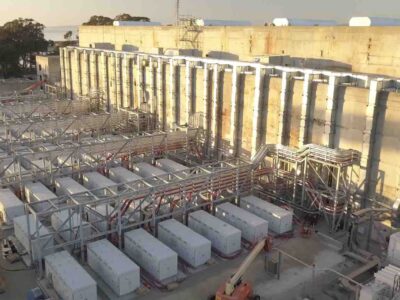Voltus Eyes Robust Growth in Sustainable Distributed Energy Resource Management with Plans to Go Public.
The electrical grid is a truly wondrous thing, delivering high-voltage energy over long distances so people from Nova Scotia to San Diego can power up their laptops, factories, and doughnut shops. It’s also a pretty inefficient and environmentally unfriendly way to do things – which is why companies like Voltus see a vast market in smaller and more efficient distributed energy resources.
Distributed energy resources, or DERs, are decentralized electricity systems located closer to where the power they produce is actually needed, thus reducing the amount of energy that gets lost when traveling from its source to its destination.
DERs can connect to so-called “micro-grids,” which are small versions that then connect to the massive, traditional electrical grids.
Voltus is a San Francisco-based startup that uses cloud-based software to manage DERs for clients. The company partners with grid operators in the United States and Canada to connect DERs to larger markets, with the goal of helping customers save money and deliver more reliable and sustainable power. Any electricity that companies don’t use can be sold back to the grid.
From a macro perspective, the globally distributed energy generation market is big and getting bigger. It was valued at around $243 billion in 2019, according to Grandview Research, and is expected to expand at a compound annual growth rate of 11.5% from 2020 to 2027.
But the market for managing DER is still in its early stages and much smaller. An October report from Verified Market Research pegged the global DER Management System market at $167.29 million in 2020, and projects that it will reach $605.5 million by 2028.
Voltus’ own market value is already well beyond that. In early December, the company announced plans to go public via a merger with Broadscale Acquisition Corp., a special-purpose acquisition company (SPAC). The merger is expected to raise about $445 million, which would value Voltus at $1.3 billion when the deal closes during the first half of 2022.
In an investor presentation accompanying the announcement, Voltus refers to itself as the “first publicly-traded, pure-play DER technology company,” and adds that “Voltus is to electricity what the cloud is to computing.” It lays claim as the only platform of its kind that is integrated into all nine U.S. and Canadian wholesale electricity markets.
Voltus’ technology is designed to perform a bunch of different functions for customers, including monitoring market conditions for potential price spikes, predicting peak hours of demand, and alerting customers when events might suddenly change demand.
The company was co-founded in 2016 by Gregg Dixon and Matthew Plante. Dixon, who now serves as Voltus’ CEO, previously was a sales and marketing executive at EnerNOC, a provider of demand response, energy procurement, and energy intelligence software. Plante, Voltus’ President, is the former CEO of EcoFactor, a connected home software developer and operator.
Voltus has enjoyed rapid growth since its launch five years ago. The company currently boasts more than 600 customers, including corporate heavyweights like Home Depot, Coca-Cola, and Simon Property Group. Voltus is expected to log $42 million in recurring revenue in 2021, then grow that figure to more than $170 million in 2023, and near $520 million by 2025.
In addition to the financial benefits Voltus brings to customers, it also helps them operate more sustainably. One way it does so is by enabling the shift to DERs in the first place, which Voltus says will permanently displace 3.9 gigatons of annual CO2 emissions by replacing carbon-intensive fossil fuel power plants.The company also enables greater energy efficiency, which has the potential to reduce buildings’ energy consumption by 30% or more by 2050. And its platform aims to reduce the need for “peaker plants” – those that usually turn on when energy demand is peaking and commonly use fossil fuels. Voltus projects that its current portfolio displaces 27,000 tons per year of CO2 from peakers alone.





